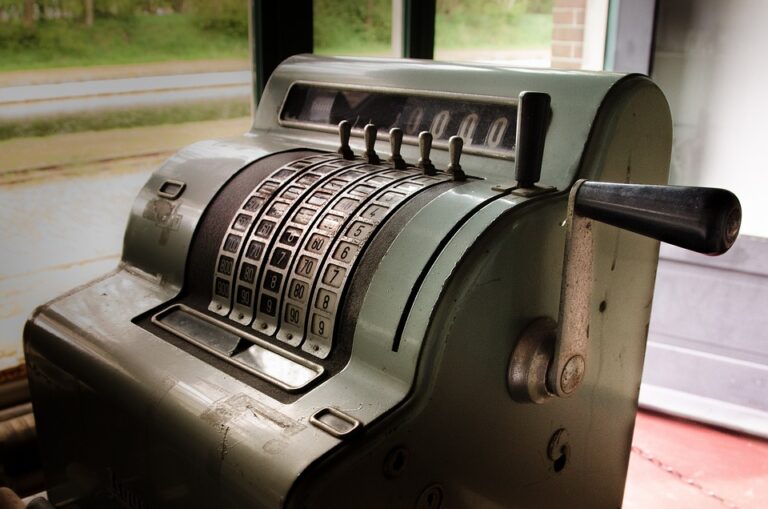Last updated Aug. 3, 2024 by Okechukwu Nkemdirim
The Federal Reserve, often referred to simply as "the Fed," is a central player in the world of finance, commanding a profound influence over the U.S. economy. Its policies and decisions ripple through various facets of the economy, affecting everything from unemployment rates to the money in your wallet. This article aims to demystify the workings of the Federal Reserve and explain how its actions impact your money.
What is the Federal Reserve?
The Federal Reserve System, commonly called the Fed, serves as the central bank of the United States. It was established through the Federal Reserve Act of 1913, primarily to provide the nation with a safer, more flexible, and more stable monetary and financial system. The Federal Reserve consists of three key entities:
- Board of Governors: This is a federal agency located in Washington, D.C. The Board consists of seven members appointed by the President and confirmed by the Senate.
- 12 Regional Federal Reserve Banks: These banks are located in major cities across the country and act as the operating arms of the Federal Reserve System.
- Federal Open Market Committee (FOMC): Consists of the Board of Governors and five of the regional bank presidents. It is primarily responsible for open market operations, which influence money supply and interest rates.
Functions of the Federal Reserve
Conducting Monetary Policy
One of the Fed’s primary roles is to manage the country’s monetary policy. This is achieved by controlling the money supply and interest rates. The main tools at its disposal include:
- Open Market Operations: Buying and selling government securities to influence the levels of bank reserves and the short-term interest rates.
- Discount Rate: The interest rate charged to commercial banks and other depository institutions on loans they receive from their regional Federal Reserve Bank’s lending facility.
- Reserve Requirements: The amount of funds that a depository institution must hold in reserve against specified deposit liabilities.
Supervising and Regulating Banks
The Fed has supervisory and regulatory authority over many banking institutions to ensure the safety and soundness of the banking and financial system. It aims to protect the credit rights of consumers.
Maintaining Financial Stability
The Federal Reserve seeks to manage systemic risks in the financial markets, ensuring that the financial system remains resilient in the face of economic shocks.
Providing Financial Services
The Federal Reserve acts as a banker to other banks and the federal government. It provides payment services including distributing currency and coin to banks, processing checks, and electronic payments.
Promoting Consumer Protection and Community Development
The Fed also engages in various activities aimed at protecting consumers in their relationship with banks and promoting fair and equal access to credit.
How the Federal Reserve Affects Your Money
Interest Rates
When the Fed raises or lowers interest rates, it influences the cost of borrowing and the return on savings. Lower interest rates make borrowing cheaper, encouraging spending and investment but reducing the incentive to save. Conversely, higher interest rates can cool down an overheated economy but make loans and credit more expensive.
Inflation
The Fed aims to maintain a balanced rate of inflation. By controlling inflation, the Fed ensures that your purchasing power remains relatively stable. Hyperinflation or deflation can wreak havoc on the economy, making it essential for the Fed to strike the right balance.
Employment
The Fed’s dual mandate includes maximizing employment. By maneuvering monetary policy, the Fed aims to create conditions conducive to job creation while avoiding excessive inflation.
Housing Market
Mortgage rates are significantly influenced by the Fed’s monetary policies. Lower interest rates can spur home buying and refinancing, leading to higher home prices. On the other hand, higher rates can slow down the housing market.
Stock Market
The Fed’s actions can significantly impact investor sentiment. For instance, lower interest rates can make stocks more attractive than fixed-income investments. When the Fed announces a rate cut, the stock market often reacts positively.
Currency Value
The value of the U.S. dollar is also influenced by the Federal Reserve. Through its monetary policies, the Fed can affect exchange rates, thereby impacting international trade and investment.
Personal Loans and Credit Cards
The interest rates on personal loans and credit cards are often linked to the Fed’s rates. If the Fed raises the federal funds rate, the interest rates on these loans tend to increase, making borrowing more expensive.
✓ Short Answer
The Federal Reserve, the central bank of the United States, influences the economy through monetary policies affecting interest rates, inflation, and employment. Its decisions impact personal finance, including savings, loans, and credit, shaping the financial well-being of every citizen.
Saving and Investment Accounts
The interest you earn on savings accounts, certificates of deposit (CDs), and other fixed-income investments is influenced by the Federal Reserve. When the Fed raises rates, savers can earn more interest on their accounts.
Business Loans
The cost of borrowing for businesses is influenced by Fed policy. Lower interest rates make it easier for businesses to finance expansion and operations, fostering economic growth and job creation.
Consumer Confidence
The Fed’s monetary policy can impact consumer confidence. When consumers believe that the economy is stable and growing, they are more likely to spend money, driving economic growth.
Key Historical Actions of the Federal Reserve
The Great Depression
The Federal Reserve’s actions during the Great Depression are a topic of extensive study and debate. Critics argue that the Fed’s decisions to raise interest rates and contract the money supply contributed to the severity and duration of the Depression.
The 2008 Financial Crisis
During the 2008 financial crisis, the Fed took unprecedented measures to stabilize the economy. These actions included slashing interest rates to near zero and buying large amounts of government and mortgage-backed securities, a practice known as quantitative easing.
COVID-19 Pandemic
The Fed responded aggressively to the economic fallout from the COVID-19 pandemic. Measures included cutting interest rates, providing emergency lending to financial institutions, and purchasing significant amounts of government and corporate bonds.
FAQs
What is the Federal Reserve’s dual mandate?
The Federal Reserve’s dual mandate is to achieve maximum employment and stable prices. This means balancing efforts to keep unemployment low while preventing excessive inflation.
How does the Federal Reserve influence interest rates?
The Fed primarily influences interest rates through open market operations, the discount rate, and reserve requirements. By buying or selling government securities, adjusting the discount rate, and altering reserve requirements, the Fed can affect the federal funds rate, which influences other interest rates in the economy.
What is the federal funds rate?
The federal funds rate is the interest rate at which depository institutions lend reserve balances to other depository institutions overnight. It is a crucial benchmark for other interest rates in the economy.
How does the Federal Reserve control inflation?
The Fed controls inflation by regulating the money supply and adjusting interest rates. Higher interest rates generally reduce spending and borrowing, helping to contain inflation, while lower rates can encourage spending and investment, potentially increasing inflation.
Can the Federal Reserve directly control employment?
While the Fed cannot directly control employment levels, its policies can create conditions that foster job creation. By managing interest rates and ensuring a stable financial system, the Fed aims to support economic conditions that maximize employment.
How often does the Federal Reserve meet to discuss policy?
The Federal Open Market Committee (FOMC) meets eight times a year to discuss and set monetary policy. These meetings are essential for deciding the direction of interest rates and other monetary policy tools.
What is quantitative easing?
Quantitative easing (QE) is a monetary policy tool used by the Fed to stimulate the economy when traditional policy tools have become ineffective. It involves the large-scale purchase of government and other securities to increase the money supply and encourage lending and investment.
How can I find out about the Fed’s decisions?
You can find information about the Federal Reserve’s decisions and policies on their official website (federalreserve.gov). The FOMC’s statements and minutes of their meetings are published regularly and provide insights into their economic outlook and policy decisions.
Does the Federal Reserve print money?
While the Federal Reserve controls the money supply, it does not directly print money. The U.S. Department of the Treasury’s Bureau of Engraving and Printing is responsible for printing physical currency. However, the Fed can influence the money supply through its monetary policy actions.
Can the Federal Reserve run out of money?
As the central bank, the Federal Reserve cannot run out of money in the same way that a commercial bank or business can. It can create additional reserves and increase the money supply as needed to fulfill its policy objectives.
In conclusion, the Federal Reserve plays a pivotal role in the economic well-being of the United States. Its policies and actions influence various aspects of the economy, including interest rates, inflation, employment, and the stability of the financial system. By understanding how the Fed operates and how its decisions impact your money, you can make more informed financial decisions and better navigate the complex economic landscape.




